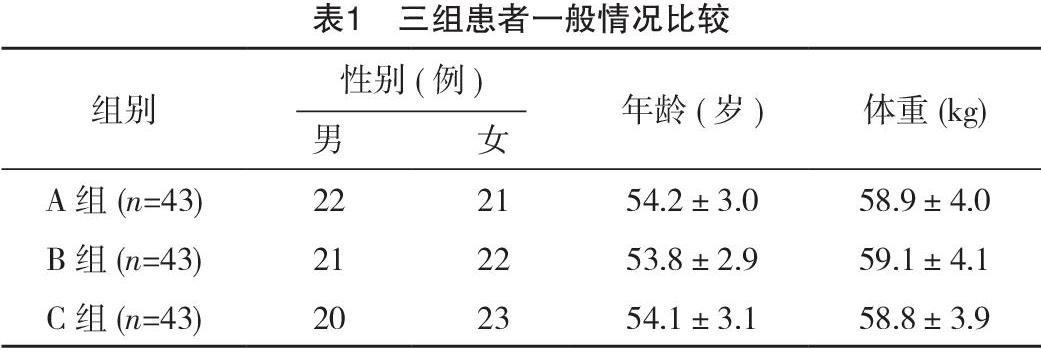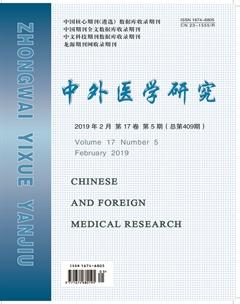右美托咪定在内镜黏膜下剥离术中的应用
俞峰 孙卫东 郑永志



【摘要】 目的:探討右美托咪定在内镜黏膜下剥离术中的应用价值。方法:129例拟行内镜黏膜下剥离术的患者,采用随机数字表法平均分为三组,对照组(A组)采用单用丙泊酚麻醉,研究组(B组)采用右美托咪定[0.2 ?g/(kg·h)]复合丙泊酚麻醉,研究组(C组)采用右美托咪定[0.3 ?g/(kg·h)]
复合丙泊酚麻醉。术后评估麻醉效果,比较麻醉时间、手术时间及苏醒时间,各组的丙泊酚用量,以及不良反应发生情况等。结果:与A组比较,研究组的麻醉效果较优(P<0.05),但B组、C组间比较差异无统计学意义(P>0.05);各组患者麻醉时间、手术时间比较差异无统计学意义(P>0.05);研究组C组的苏醒时间明显长于A组和B组(P<0.05),同时A组和B组的苏醒时间相比差异无统计学意义(P>0.05);与A组比较,研究组的丙泊酚用量显著低于对照组(P<0.05),但B组、C组比较差异无统计学意义(P>0.05);B组不良反应发生率最低(P<0.05)。结论:在内镜黏膜下剥离术中采用右美托咪定[0.2 ?g/(kg·h)]复合丙泊酚的麻醉方式,可以为手术操作提供理想的麻醉效果,减少丙泊酚用量,减少不良反应,是安全有效的麻醉方法。
【关键词】 右美托咪定; 丙泊酚; 麻醉; 内镜黏膜下剥离术
doi:10.14033/j.cnki.cfmr.2019.05.011 文献标识码 B 文章编号 1674-6805(2019)05-00-03
Application of Dexmedetomidine in Patients Undergoing Endoscopic Submucosal Dissection/YU Feng,SUN Weidong,ZHENG Yongzhi.//Chinese and Foreign Medical Research,2019,17(5):-27
【Abstract】 Objective:To investigate the application of Dexmedetomidine in patients undergoing endoscopic submucosal dissection(ESD).Method:129 patients in need of ESD in our hospital were selected.They were randomly divided into control group A(injected with only Propofol),study group B[injected with Propofol and low-dose Dexmedetomidine 0.2 ?g/(kg·h)] and study group C[injected with Propofol and low-dose Dexmedetomidine 0.3 ?g/(kg·h)].The analgesia effects,analgesia time,operative time,wake up time,the dose of propofol and adverse reactions were recorded in the 24 h after the treatment.Result:Compared with group A,the analgesia effects in group B and group C were better with statistically significant(P<0.05).However there was no statistically significant differences between group B and group C(P>0.05).Compared with group C,the wake up time in group A and group B were longer with statistically significant(P<0.05).However there was no statistically significant differences between group A and group B(P>0.05).There was no significant difference in analgesia time and operative time(P>0.05).The wake up time of group C was significantly longer than that of group A and group B(P<0.05),and there was no significant difference between group A and group B(P>0.05).Compared with group A,the dose of Propofol in group B,group C were lower with statistically significant(P<0.05).However there was no statistically significant differences between group B and group C(P>0.05).The adverse reactions in group B were significantly lower than that in group A and group C(P<0.05).Conclusion:The application of Propofol and low-dose Dexmedetomidine[2 ?g/(kg·h)] is safe and effective in patients undergoing endoscopic submucosal dissection.It also can reduce the the dose of Propofol and improve the satisfaction of patients.

